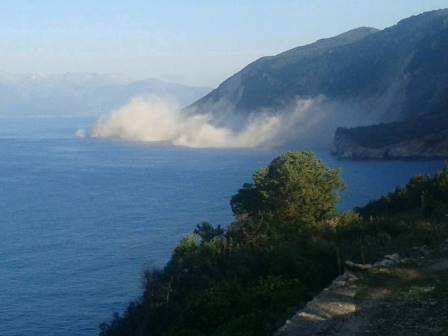Overview
Models being tested use a variety of hydrodynamic approaches together with variations in treatment of bottom or slide motion. Models are can be thought of as being categorized across both variables, and are thus indicated below by two category numbers. Models are grouped according to
Hydrodynamic approach
- Nonlinear Shallow Water Equations (depth-integrated, hydrostatic)
- Boussinesq or depth-integrated non-hydrostatic equations
- 3D non-hydrostatic models (sigma-coordinate, terrain following, sparse vertical resolution)
- Navier-Stokes solvers
Treatment of slides
- Solid slide, or prescribed impermeable bottom motion
- Viscous fluid slide
- Granular or debris flow slide
- Multiphase - slide treated as mixture or distinct phase in variable density model
The set of models being tested includes:
- NHWAVE (3;1,2,4,5). Benchmarks 1,2,3,4,5,6,7 (References: Ma et al (2012), Ma et al (2013), Ma et al (2015), Derakhti et al (2016), Kirby et al (2016) )
- TSUNAMI3D . (4;5) Benchmarks 2,4,7 (References: Horrillo et al (2013) )
- LS3D (2;1) Benchmarks 2,3,7 (References: Ataie-Ashtiani and Najafi-Jilani (2007), Ataie-Ashtiani and Yavari-Ramshe (2011) )
- 2LCMFlow (1;3) Benchmarks 4,5 (References: Yavari-Ramshe and Ataie-Ashtiani (2015) )
- GloBouss (2;1) Benchmarks 1,2 (References: Lovholt et al (2008), Pedersen and Lovholt (2008) )
- BoussClaw (2;1) Benchmarks 1,2
- Thetis (4;4). Benchmarks 3, 4, 5
- Landslide-HySEA (1,2:1,3). Benchmarks 2,4,7 (References: Macias et al (2015), Fernandez-Nieto et al (2008) )
- Alaska GI'-L shallow water model (1;2) Benchmarks 2,4,7
- Pat Lynett - linear mild slope, Boussinesq

